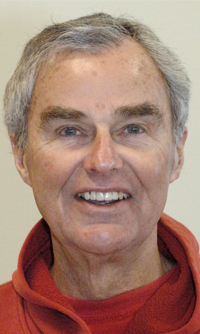The landscape of western America is as varied, beautiful, wild, damaged, bountiful and poisoned as any on earth. As an inhabitant of western America, I view its landscape—mountains, deserts, rivers, lakes, streams, forests, rock walls, glaciers, canyons, meadows, ocean and bays—as a priceless, incomprehensible gift of indescribable beauty and significance.
Wolf, bear, cougar, coyote, marmot, eagle, hawk, rabbit, snake, lizard, tortoise, frog, fish, beetle, elk, fox, moose, bison, deer, owl, mouse and ptarmigan are of and formed by and conscious of the landscape in which they live and die.
As are we.
Of and formed by and conscious of the landscape in which we live and die.
What we do to the landscape we do to ourselves.
What we make of the landscape we make of ourselves.
We are what we eat, as the old saw has it, but, more, we are also what we do in order to eat. And we are what we do to the landscape in order to eat. And we are what we see and do not see in the landscape around us.
The landscape is our oldest, best, most reliable teacher. Just look around; the longer, closer and more carefully we contemplate the landscape the more it will tell us---about its current state and ours.
I grew up with the Sierra Nevada and the great open desert to the east as my boyhood playground. Lucky me. But I don't remember contemplating any of it as anything other than a backdrop and field for my personal endeavors until I was in college. That seems strange in some ways, but, like many people of that age and time, I was immature beyond my years and barely conscious of many things that constituted and formed my life. It was a great time and I enjoyed it, but consciousness of the world (the landscape) and personal pleasure and endeavor are quite different matters. The reader may know others whose consciousness could be so described, but it need not be a terminal state.
Like all learning, mine was multi-faceted and more complex than a single teacher and class, but a freshman art appreciation class at the University of Nevada helped me appreciate more than art. I was not at all interested in art and took electives according to the time of day they were offered so that I could ski in the afternoons. It was my good fortune that Craig Sheppard's art appreciation class fit my ski time aspirations. Sheppard, a fine, well-known western artist, was the kind of person and teacher that inspired attention. I liked him, but, more, it was clear he knew things about his subject and about life that other teachers did not. He showed me (us?) that art appreciation could be a door of perception, a tool of understanding and a connection to the world as perceived and expressed by the artist.("Duh," one might say.)
Art Appreciation 101 covered the history of art, but Sheppard himself painted landscapes of Nevada, among other things. His work touched and moved me more than, say, reproductions of Botticelli, Rubens or even DaVinci, and I never viewed the landscape of Nevada quite the same after my initial exposure to Craig Sheppard. I was of that landscape and I responded to the way Sheppard expressed and honored that connection. It would be years before I could put words to that response and connection. A few years later I spent several days walking around the countryside near Arles in southern France, and I realized that I could not have seen the landscape the way I did without knowing the work of van Gogh. And I would not have been interested in landscape or van Gogh had I not taken a basic art appreciation class from Sheppard.
An old teacher (Sheppard) pointed me in the direction of a much older one (the landscape). Lucky me.
These days I favor the lovely lithographs and oils of Russell Chatham. I never tire of them, and I often see Chathams in many places in the western landscape. I have written elsewhere, "Chatham said of Montana as 'the last good place' that '...it's the last of the romance in America. Everything else has been swallowed up, chewed up and spit out.' He might have been describing the remaining functioning landscape of western America. A Chatham landscape is a window into the west's inscrutable nature and a reminder of the value and virtue of the incomprehensible. It is not inconceivable that in 200 years Chatham's art, like that of the early 19th century artist George Catlin who left us the best (perhaps only) paintings of Native Americans before they were swallowed up, chewed up and spit out by America's progress, will be the last and the best of what is left of the American landscape."
Sheppard died in 1978. Since then the western landscape has shrunk. It has suffered abundant destruction and indignities, too obvious and numerous to need mentioning, including the huge fires of summer that are directly connected to the global warming we have all created. I wonder what Sheppard would think and how he would paint today's western landscape that we are all of and formed by and at least at some primordial level conscious of?






































